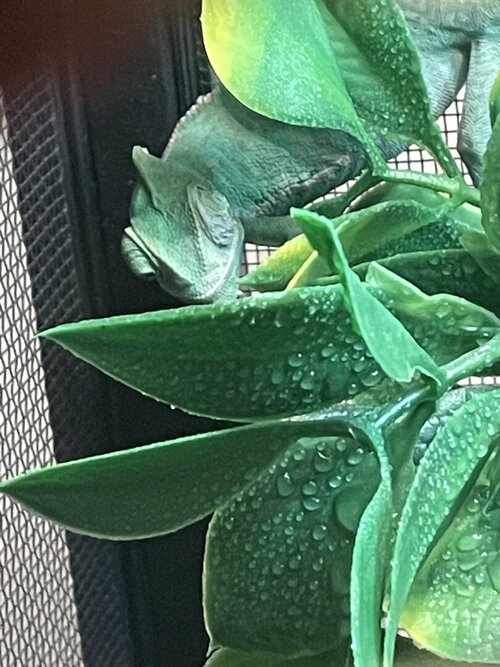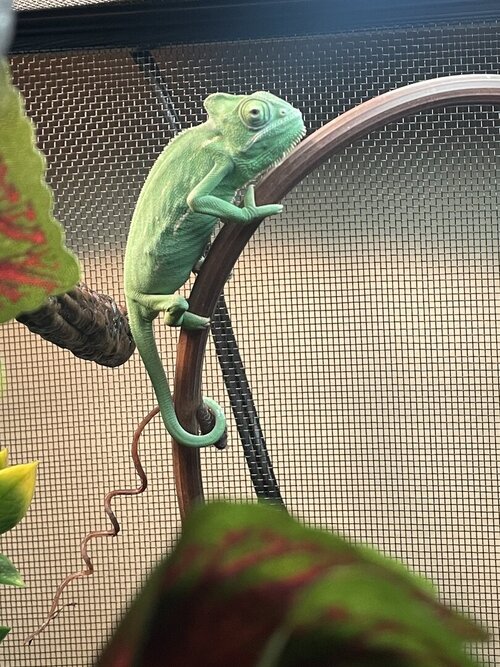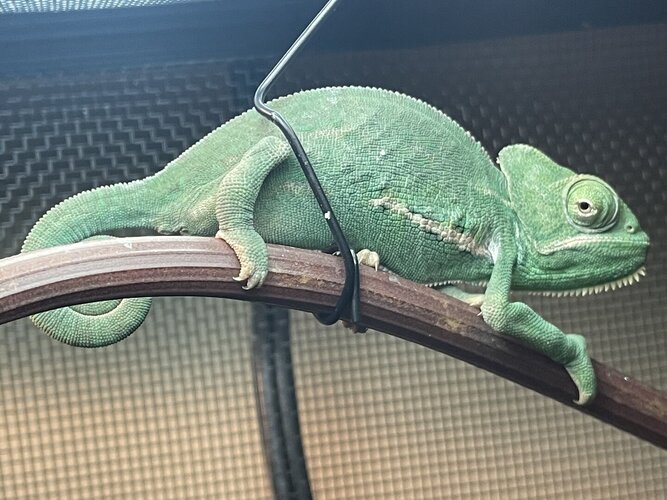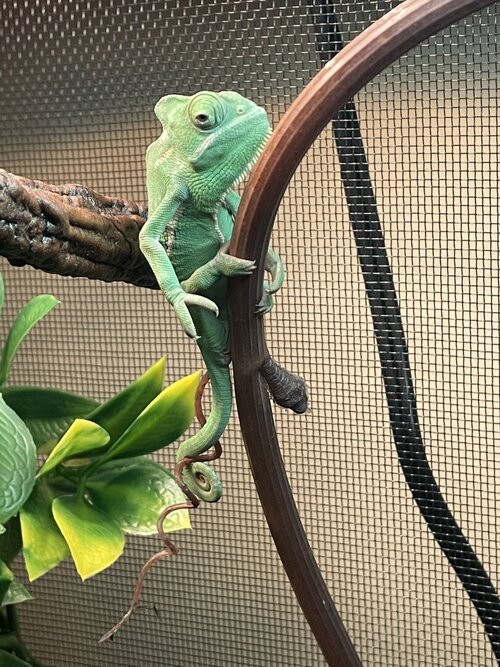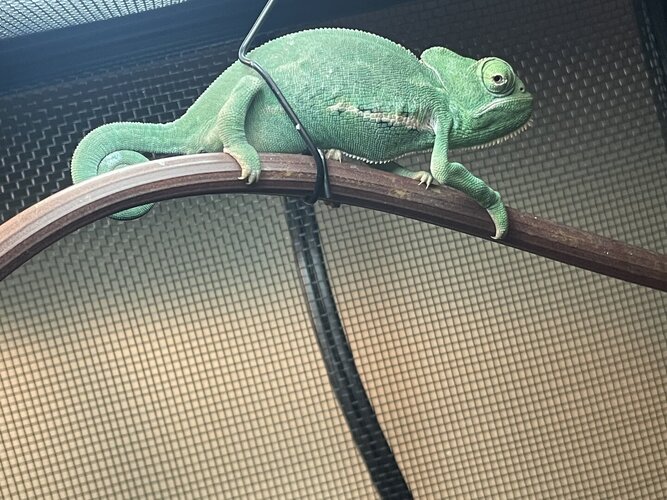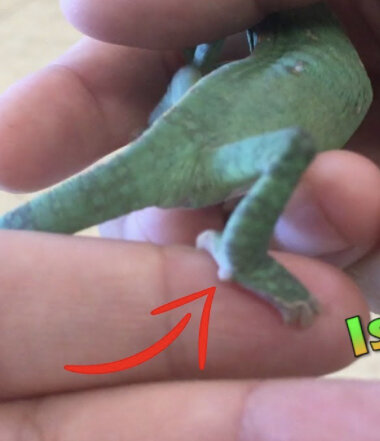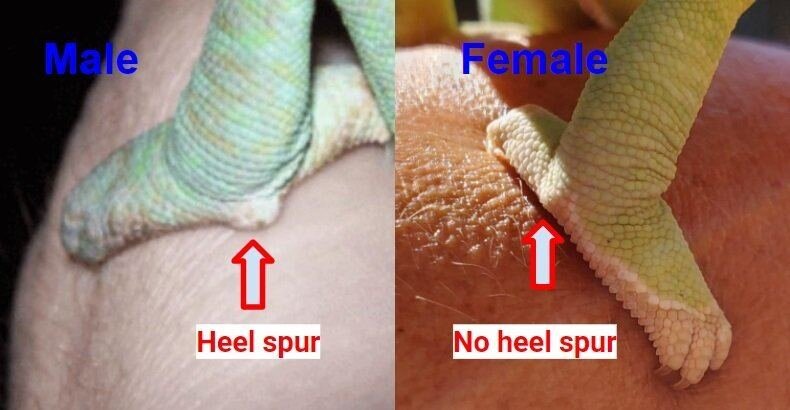aduesler93
Member
Hello!
I recently purchased a young (approx. 3 months old) male veiled chameleon. I’ve had him for a week and a few days ago I noticed his left eye turret had some gray on it when he moved his eye around. I’ve been watching it closely and today it seems like it is more sunken in. He still appears to be using that eye to see and the other eye looks perfectly fine. He seems to have adjusted well, is eating regularly, moves around a lot and gets at least 3 mistings per day (but I haven’t seen him actually drink in front of me yet). I don’t have a local vet that works with reptiles so I want to check in to see if it may be something more simple. It is not drippy or closed so it doesn’t seem to be an infection. He is very brightly colored unless he gets scared and seems to otherwise be health. Any more information needed I will be glad to provide! Thanks!
The first photo is the best I could get tonight of his left eye and the second is his right eye
I recently purchased a young (approx. 3 months old) male veiled chameleon. I’ve had him for a week and a few days ago I noticed his left eye turret had some gray on it when he moved his eye around. I’ve been watching it closely and today it seems like it is more sunken in. He still appears to be using that eye to see and the other eye looks perfectly fine. He seems to have adjusted well, is eating regularly, moves around a lot and gets at least 3 mistings per day (but I haven’t seen him actually drink in front of me yet). I don’t have a local vet that works with reptiles so I want to check in to see if it may be something more simple. It is not drippy or closed so it doesn’t seem to be an infection. He is very brightly colored unless he gets scared and seems to otherwise be health. Any more information needed I will be glad to provide! Thanks!
The first photo is the best I could get tonight of his left eye and the second is his right eye

